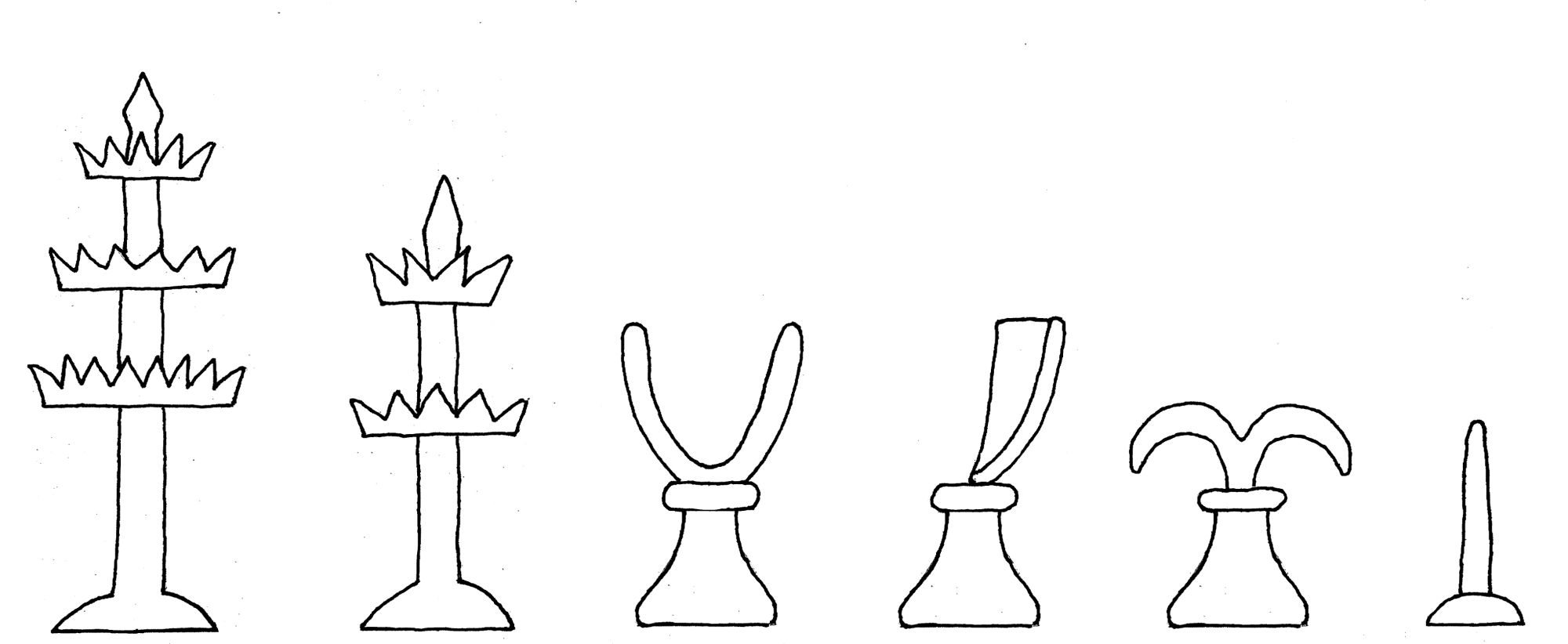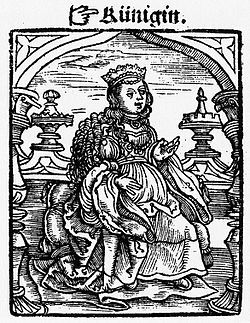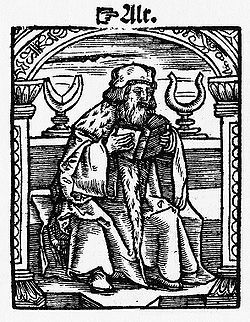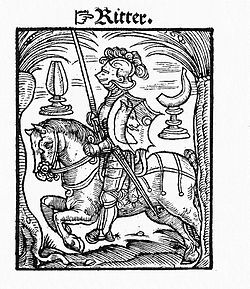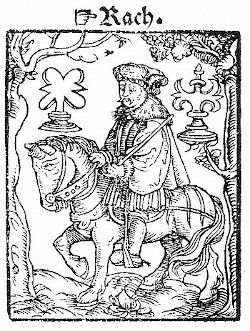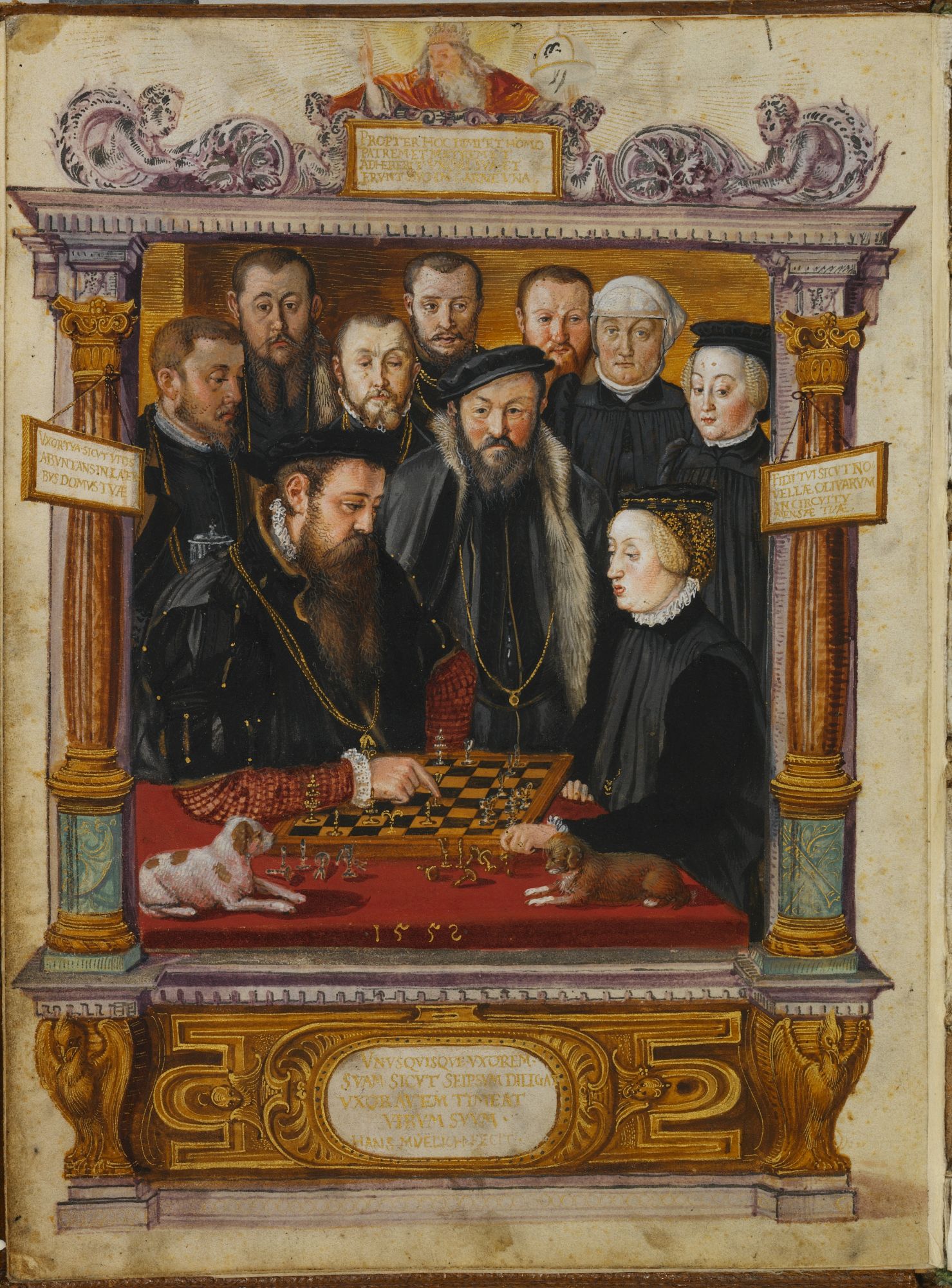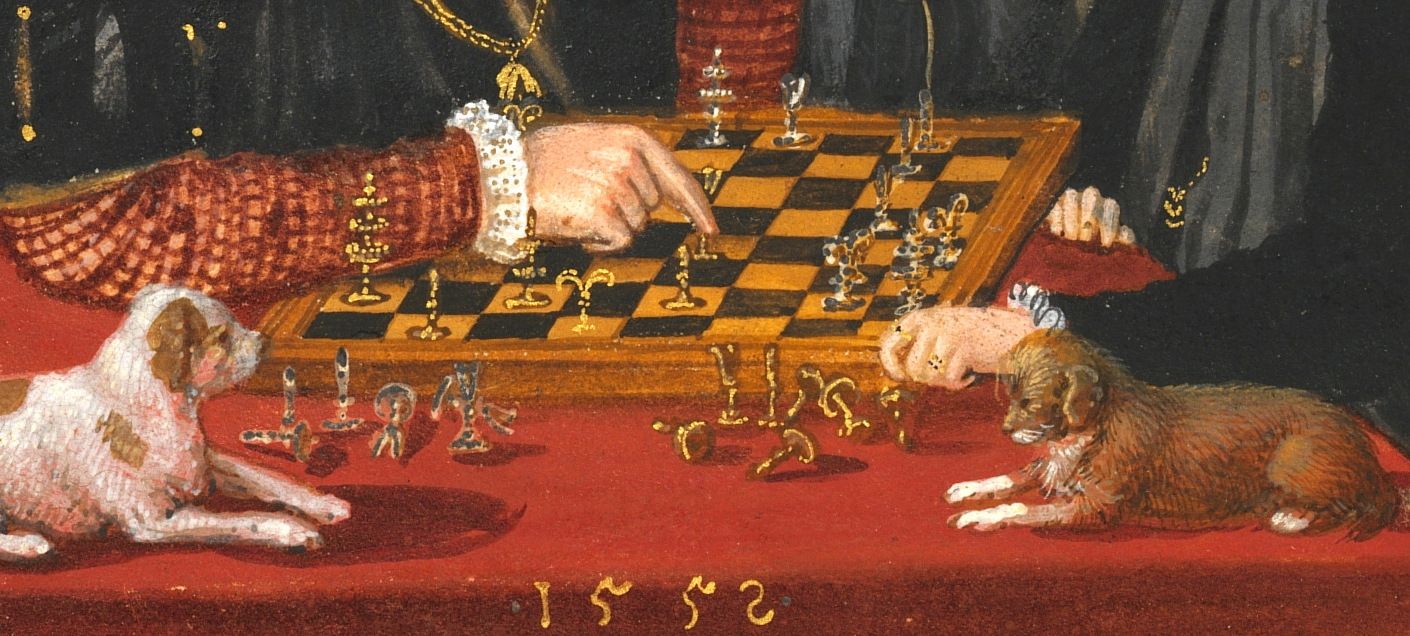Chess sets of sixteenth century Germany
The Kobel chess sets, c. 1520
Jacob Mendel (1460-1526) was born in Bergenz, a city on Lake Constance, capital of the state of Vorarlberg in Austria. He wrote Schachzabel, printed there in 1507, on the occasion of the Konstanzer Reichtag. This is a greatly abridged version (586 verses compared to 19,336 of the original) of Konrad von Ammenhausen's Schachzabelbuch, written in 1337, which itself was a translation into a Middle High German verse of the then unpublished sermons by Jacobus de Cessolis (c.1250 to c.1322) (see our page Chess sets of the fourteenth century).
Mendel's Schachzabel was reprinted with additions in 1520, by Jakob Kobel in Oppenheim; and then in 1536 by Egenolff in Frankfurt. These two publications have illustrations of chess sets which each have elaborate turned features, but in essence are not dissimilar in form to the set published in Venice by Jacobus Publicius in his Ars oratoria in 1482.
The 1520 publication by Kobel illustrates two different chess sets in a series of six beautiful woodcuts, each dedicated to a different piece. The two sets are similar in many respects, with elaborate carved and turned elements mounted on stepped pedestals. The kings and queens (see figures above) are bulky rather than slender, with carved whorls of crenulations or points. The bishops (below) both have the two arms pointing upwards, a form dating back to the fourteenth century (see the Ammenhausen chess set).
The knights in each set are quite different. One has the typical asymmetrical form similar to that of the chess set of Albrecht and Anna (see below). The other knight is in the form of a vertically-ridged swollen column.
Both rooks have a form in which the downward pointing arms, familiar in the sets of Caxton and Publicius of the late fifteenth century, as well as those of the fourteenth century before, and stretching back to the Alfonso set of late thirteenth century Spain, are mirrored above to make a symmetrical form resembling a butterfly.
The pawns in both sets take an elaborated form commensurate with the other pieces, but based upon simpler tapering forms of this piece from earlier centuries.
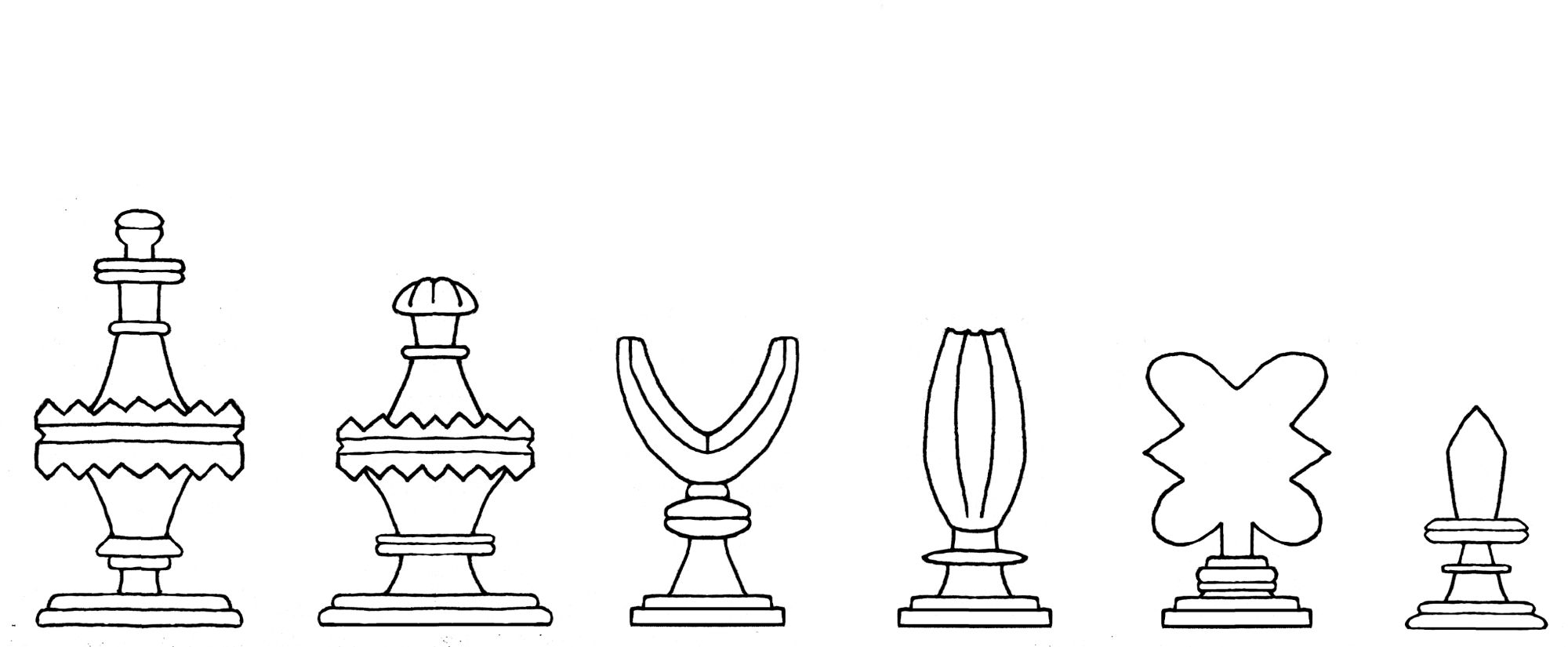
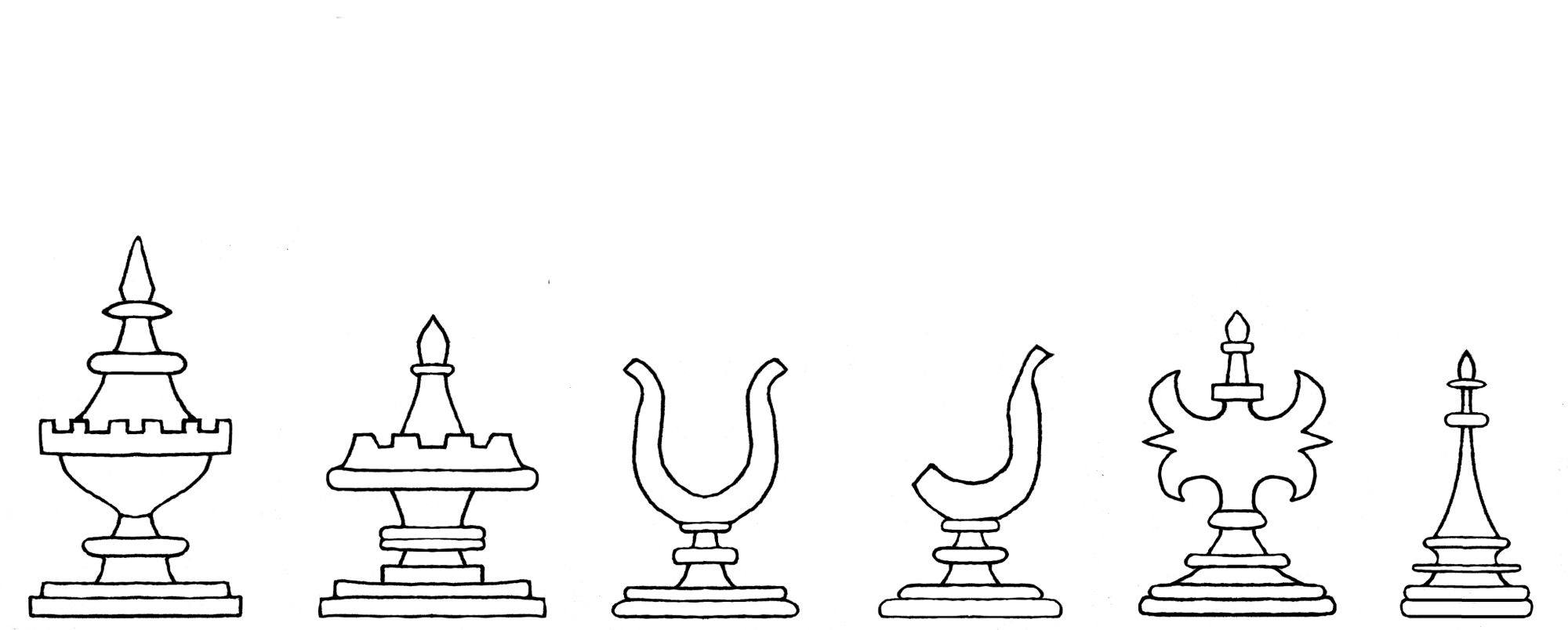
Of the chess sets shown in several editions of Mendel's Schachzabel, published by Egenolff in the mid sixteenth century, two are illustrated by H.J.R. Murray in his A History of Chess (1913). Murray's interpretation of the earlier of these sets shows a king and queen both elaborately-turned, with several tiers of disks and crowns. Murray shows the bishop, knight and rook from this set as very similar to those of Kobel number 2 above, and in part to those of the Albrecht and Anna set (discussed below). In a later edition however, these three pieces are of a simpler form similar to those of the earlier Publicius set (1490).
The Albrecht and Anna chess set, c. 1552
The Jewel Book of the Duchess Anna of Bavaria was commissioned in 1552 by Duke Albrecht V of Bavaria. The manuscript details the jewellery owned by the Duke and his wife, the Duchess Anna, daughter of Emperor Ferdinand I. The manuscript was kept in the private ducal and electoral Chamber of Artefacts for almost three centuries, long after the original jewellery depicted had been lost. In 1843 the work was presented to the Bavarian State Library by King Ludwig I. The work contains many painted miniatures by Hans Mielich, one of which shows Albrecht and Anna playing chess. Albrecht, sitting on the left, portrayed as a Knight of the Order of the Golden Fleece, is opposite Anna, with eight others behind, looking on. The chess set is presumably made of silver and gold, with Anna playing the silver and Albrecht gold. A number of pieces have been captured, and lie in front of the board in two piles alongside two miniature dogs.
Assuming for notation purposes that the silver pieces are white, and that the gold are black, the two kings are at b8 (gold) and h5 (silver), and the two queens at b6 (gold) and b1 (silver). On the board also are the four rooks at a5 and g 8 or h8 (gold, the latter's position obscured by Albrecht's arm), and b2 and d1 (silver). The kings are tall, elegant, and slim, with three tiers of crowns. The queens are similar, but with two tiers. The rooks are typical of the later medieval period, with two arms curving upwards from the centre and then down to each side.
There is a question over the form of the bishops and the knights. Albrecht is holding a gold piece over c4, and there is a silver piece at h4. In the gold pile to the right of the board are three pieces that do not look like pawns; and in the silver pile on the left are three pieces that also are not pawn-like. This makes a total of eight, which could be the bishops and knights. This leaves five pawns on the board (two gold and three silver) and severn off the board (three gold and four silver). We are missing one silver and three gold pawns, some of which could be hiding behind Albrecht’s arm. Even with these pieces missing, this is still a more complete set than is often the case for an artists depiction of chess in progress. However, sorting out the bishops and the knights is another matter. It is possible that both the knights and bishops have a bisymmetrical form, each with two prongs pointing upwards in either a V or U shape. However, the two clearest pieces on the board (at c4 and h4) appear to be one-pronged and asymmetrical, a common form for the knight that is known from Germany (see Kobel above).
